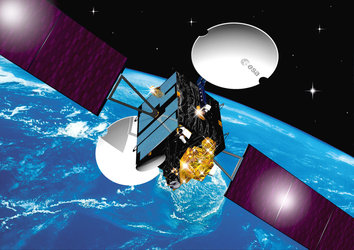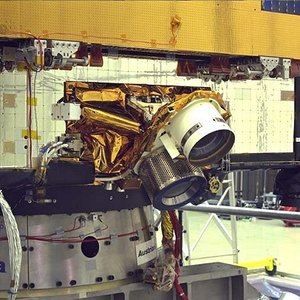Plan drawn up to meet recommendations of enquiry into Flight 142
The independent Inquiry Board, set up by Arianespace to examine the reason why the recent Flight 142 did not successfully complete its mission, has now submitted its findings.
Arianespace reports today that the board has pinpointed the causes for the anomaly and recommended corrective measures. All of the recommendations have been accepted and will be applied as quickly as possible.
The Inquiry Board's report
The Inquiry Board made a complete analysis of all measurements recorded during Flight 142 and studied the production, quality and technical background documents concerning all Ariane 5 missions to date. Also reviewed by the board was the work of production and development teams in Europe.
The board's findings confirmed that all processing and countdown operations for Flight 142 proceeded nominally, as did the Ariane 5's flight prior to ignition of the upper stage's Aestus engine.
The report identified a combustion instability during the Aestus engine's ignition. The resulting degraded engine combustion conditions led to a lower than normal thrust output. In addition, these conditions also resulted in the premature depletion of one of the propellants, which in turn caused the engine to shut down earlier than normal.
The strong pressure variation responsible for the combustion instability upon Aestus engine ignition is attributed to a dynamic hydraulic coupling between the upper stage's propellant feed system and the engine's combustion chamber internal circuits.
As part of its investigation, the Inquiry Board clearly ruled out any link between the Ariane 5's upper stage malfunction and the operation of propulsion systems on the Ariane 4 launch vehicle.
Recommendations
The abnormal operating conditions encountered during Flight 142 will be studied in depth to further define the engine's ignition phase.
The following recommendations have been made:
- The hydraulic conditions that occur during Aestus engine ignition should be dynamically modelled mathematically.
- The upper stage's ignition phase should be improved to make it steadier and smoother.
- The qualification criteria should be adapted to the modified ignition phase.
- The test benches should be adapted to more closely duplicate flight conditions.
- The in-flight operating margins should be demonstrated by an engine test programme.
- The next flight engines should be qualified according to these new criteria.
Arianespace accepted all of the recommendations and said that they would be applied as quickly as possible in coordination with the manufacturers concerned.
Action plan
After analyzing the board's recommendations, Arianespace, together with the European Space Agency and the French CNES space agency, and with the support of the Ariane Programme industrial partners, has defined the following action plan:
- Analysis of the data recorded during ground tests and in-flight operations of the Aestus engine and the EPS stage, especially data allowing an in-depth analysis of the ignition sequence.
- Dynamic modeling of the propellant supply system.
- Updating the mechanical modelling of certain combustion chamber parts.
- Analysis of a MMH propellant flow control system.
- Definition, validation and qualification of the modifications necessary for the ignition sequence.
- Modification of the engine test bench to more closely duplicate flight conditions.
- A test programme involving Aestus qualification and flight engines.
- Reassessment of the production quality and inspection procedures.
- Application and acceptance of Aestus engine modifications for upcoming Ariane 5 launches.
Based on the timely application of this action plan, Arianespace now expects the next Ariane 5 launch to take place in late November. This would be a delay of about two months compared with the initial schedule.
Arianespace launches continue
Arianespace is continuing its launch activities at Europe's spaceport in French Guiana with the next mission, Flight 143, which will use an Ariane 4 to orbit the Intelsat 902 communications satellite. Flight 143 is now scheduled for the end of August.









